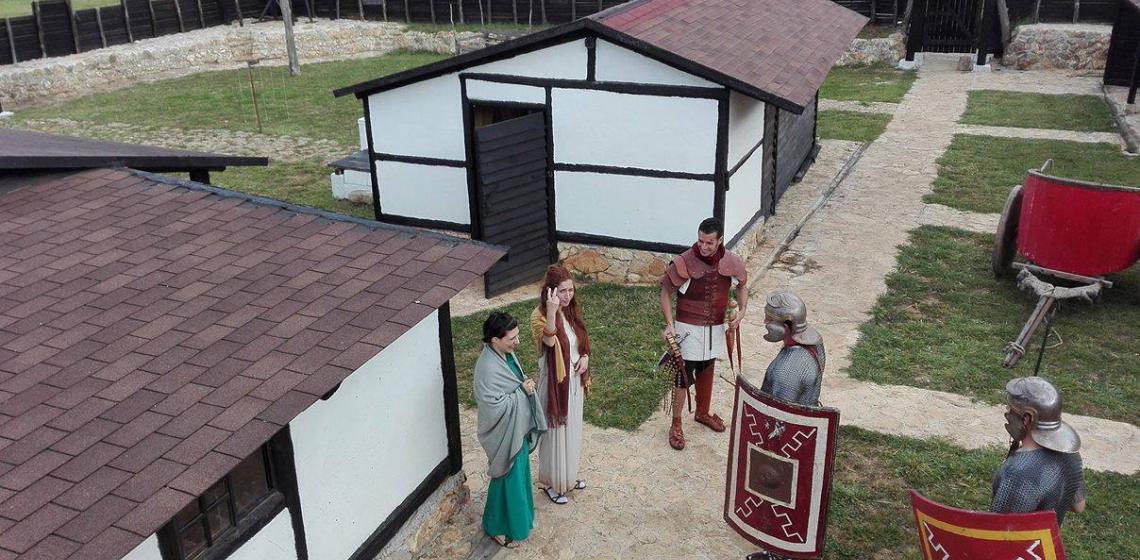Ad Signa Milites (IT)

The AD SIGNA MILITES fort measures 40m x 45m, has a wooden palisade, three guard towers at the gates and a surrounding double ditch. Inside are barracks, a kitchen, commanders quarters, blacksmith’s workshop, latrines, well, battle-cart, helmets, armour, swords and other weapons, including a ballista. In addition, there are items of daily living used by roman soldiers.
There is a teaching and recreational area with illustrative models and a small book collection for students.
The fortified roman camp or fort was either a temporary or permanent structure to house one or two military legions. It was probably the fundamental element of military power and basis for the spread of roman civilisation. The autonomous and self-sufficient community guaranteed security to the legionaries when coping with long campaigns in enemy territory. The virtually perfect structure and organisation represented a powerful psychological weapon in the eyes of the enemy.
Once the first phase of occupation was over, fortified camps developed into definitive settlements and communities. Such modern cities as Turin, Cologne and London all grew out of roman camps. Soldiers’ families, artisans, merchants and local indigenous population quickly settled in the surrounding area, attracted by the commercial potential.
Thanks to the soldiers’ pay (stipendium), economic development spread through the then-known world: somewhat like modern-day “globalisation”. The Castrum (Fort) was split by two main roads (cardo & decumano) intersecting to form a cross. Depending on the size of the camp, there could be up to four gates in the sidewalls. Gates were protected by towers with overhanging top sections. According to the level of threat, one or two ditches (fossae) were dug, surrounding the camp.
The lower section of the encircling protective outer wall was usually earthwork with masonry or wooden superstructure. Within the camp walls were barracks for troops, lodgings for the commander, granaries, offices, stables for horses and an exercise area for winter training.
Text & Photo: Ad Signa Milites
